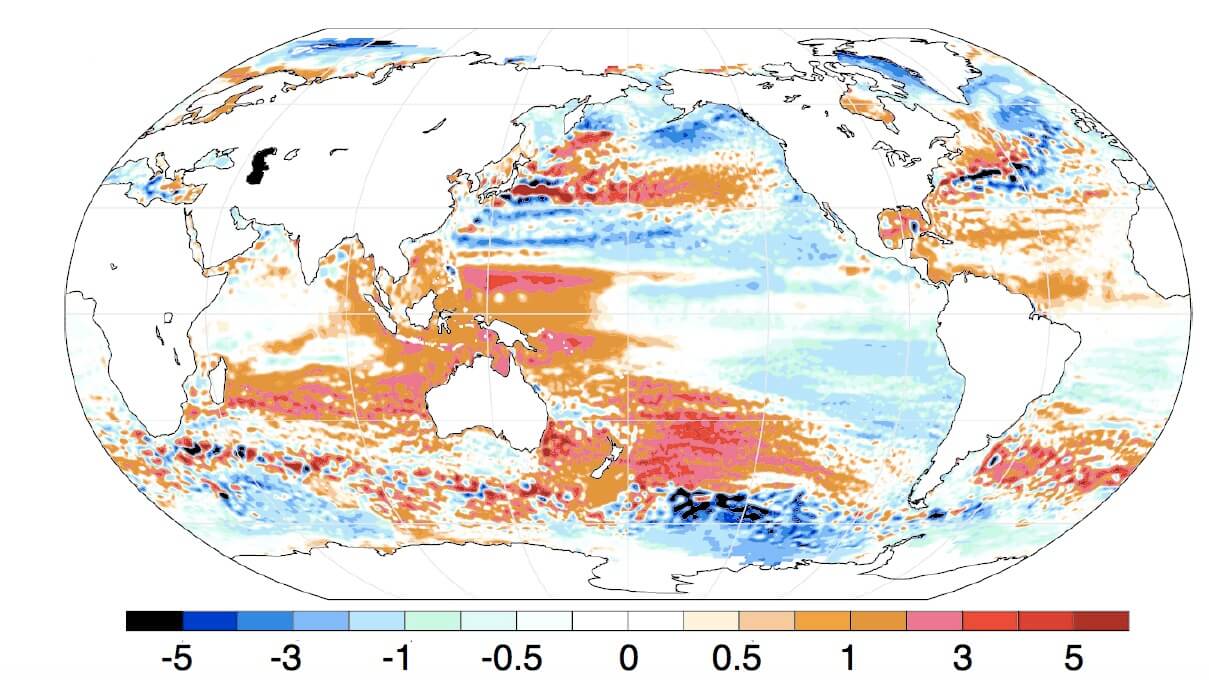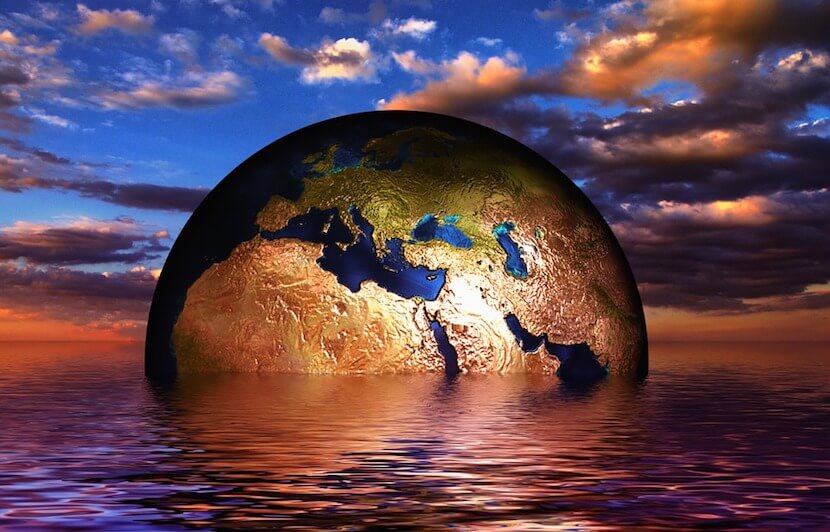Climate change, driven by humans, plays a significant role in the pattern of uneven sea level rise, according to a new study funded by the National Science Foundation, the NASA Sea Level Change Team and the U.S. Department of Energy.
Using two different climate models, the researchers found that climate change could be attributed to as much as 50 percent of the variation in regions that have experienced abnormal sea level rise in the past 25 years.
“The findings suggest that many of the regions where sea level rise has experienced deviations from the global average rate of rise over the past 25 years may experience a continuation of those departures for the next 25 years,” said John Fasullo, a project scientist at the National Center for Atmospheric Research (NCAR) and co-author of the study.
Two of those regions include the Eastern Seaboard of the United States and the Gulf of Mexico.
The study, published in the Proceedings of National Academy of Science, was co-authored by Steve Nerem, a professor of aerospace engineering at the University of Colorado Boulder and an associate director of the Colorado Center for Aerodynamics Research (CCAR).
Both researchers are members of the NASA Sea Level Change Team.
Mapping sea level rise
To conduct the study, Fasullo and Nerem used a technique known as satellite altimetry to analyze measurements of sea surface heights dating back to 1993.
By doing this, they were able to map global average sea level rise as well as how particular regions have deviated from the average in the last quarter century.
They found that oceans surrounding Antarctica and the U.S. West Coast have had below average sea level rise, while the U.S. East Coast and Southeast Asia, including the Philippines and Indonesia, have experienced higher than average sea level rise.
Additionally, in some parts of the world, the rate of local sea level rise has been as much as twice the average.

Image: PNAS
These regional differences in sea level rise are a result of where heat is stored in the ocean — since warm water expands to fill more space than cold water — and how that heat is transported across the globe by currents or wind. Sea level rise is also affected by ice sheets, which lose mass as they melt, and subsequently shift the gravitational forces affecting regional sea surface height.
These natural shifts in ocean cycles have been known to affect sea level changes.
What’s been more difficult, however, is understanding if these natural cycles are the dominant cause of regional shifts in sea level rise, or if it has to do with climate change.
Investigating climate change
To assess the role of climate change in this matter, the researchers turned to two sets of climate models, known as “large ensembles.” One model was created using the NCAR-based Community Earth System Model, while the other was created using the Earth System Model at the National Oceanic and Atmospheric Administration.
The two large ensembles consisted of many climate simulations, allowing the researchers to understand the differences between natural variability and climate change.
“The models we use produce many individual simulations of climate spanning the 20th and 21st centuries, each of which contains the random variations of climate (e.g., weather/El Niño) and also the underlying climate change driven by humans (which is systematic),” said Fasullo.
“By averaging together these simulations, the random variations average out while the climate change component remains.”
While predicting climate change is very difficult to assess, the researchers explained, the models they used were among the best and provide an important new tool in assessing sea level variability.
Moving forward
In the past, forecasters have had to rely on the global rate of sea level change — about 3 millimeters a year and accelerating — and knowledge of the uneven regional impacts associated with continued melting of the ice sheets covering Greenland and Antarctica to assess regional sea patterns.
However, these new findings add the possibility that regional ties to sea level rise can be factored in by observing climate change patterns.
Since greenhouse gases are known to directly affect sea level rise through ocean warming and melting ice caps, an obvious path forward would be to reduce greenhouse gas emissions, explained Fasullo.
The researchers hope this work will be of interest to local officials, who are interested in maintaining safe sea level rise in their regions.
“As members of the NASA sea level science team, we hope to continue to better understand past and future changes in sea level over the coming years. Doing so will benefit from our use of climate models and the latest observations along with insights from the broader science team,” said Fasullo.
“It is exciting and impactful science to be engaged in.”



